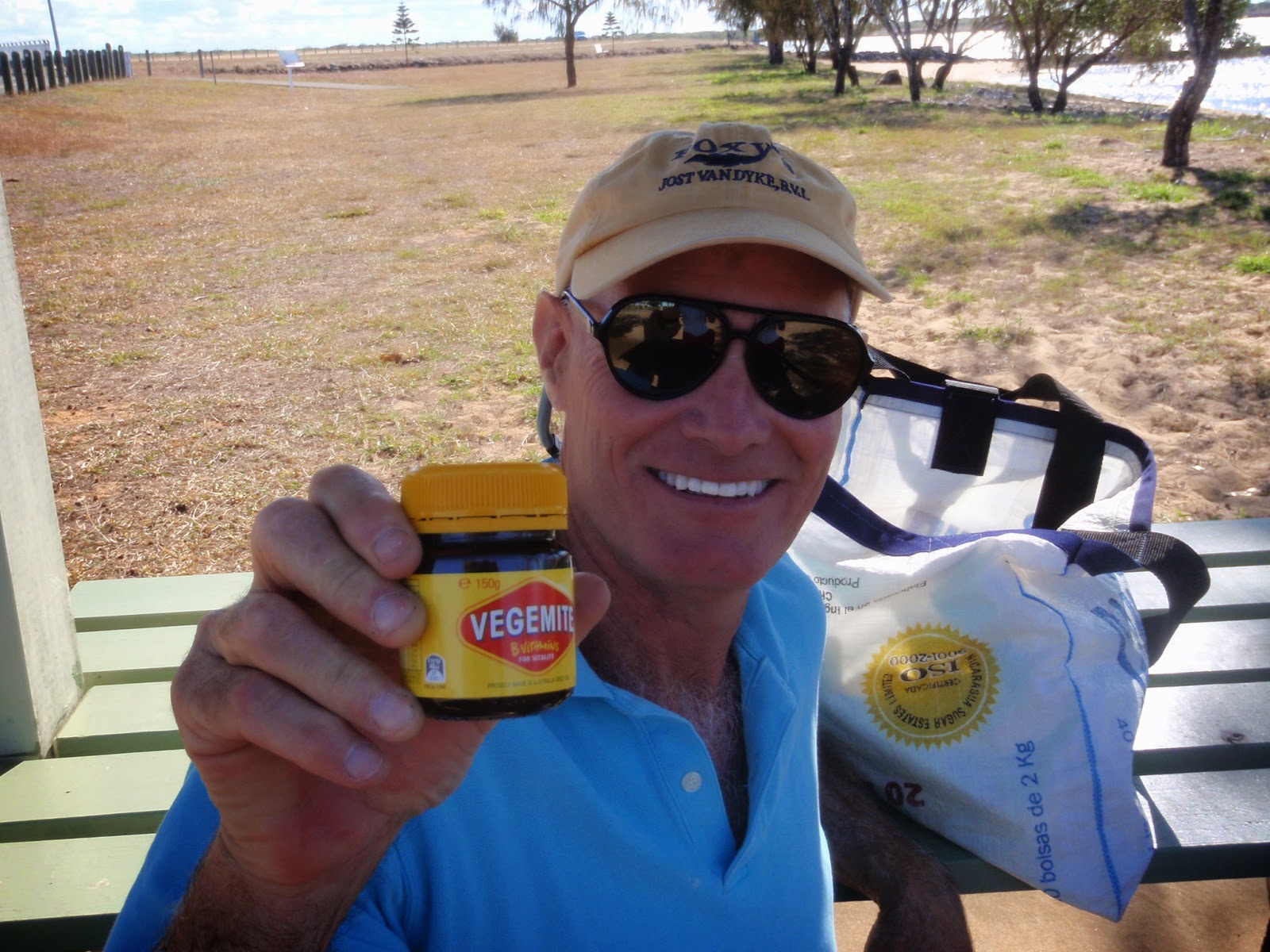Mackay is within easy striking
range of the Whitsundays. There are
islands as far as you can see. We have
even been referring to this area as the AVI's (Australian Virgin Islands)
because they are so similar to the British Virgin Islands,
only so many more islands covering so much more area. Whale sightings are now almost as common as
dolphins and we are still 30 miles inside the Great Barrier Reef.
Even though the Barrier Reef
is blocking much of the Pacific
Ocean swell, in many of the
anchorages the boats get rolling and uncomfortable at times. The real issue however are the tides. They are huge at 23ft in Mackay and 18 ft in
the Whitsundays. The hydrodynamics of
this area are similar to the Chesapeake
Bay with the Barrier Reef
being similar to the Eastern
Shore with similar depths. However, the Chesapeake has 2 ft tides and still has some pretty good
current. Imagine what a 23 ft tide would
do with the volume of water in the Chesapeake.
So even when anchoring at an isolated
island, there is current as if you are in a coastal river and the boat will
swing 4 times daily according to the tide and not according to the wind. Since you are not pointing in to the wind but
covering 180 degrees of swing, there are times when the ocean swell, wind chop,
or current counter wind will be hitting the side of the boat and there you go,
rocking and rolling.
Normally we put out an anchor
chain length of about 4-5 times the depth of the water. This is called 'scope' and make a low angle
at the shank of the anchor which keeps the anchor from pulling out. With these big tides, you have to check your
depth and tide when picking a spot to anchor to make sure that you won't be
sitting on the bottom when the tide goes out. You also need to add the tide to your depth so
you have scope to keep from pulling your anchor out when the tide goes high.
 | |
| Anyone for a Vegemite Sandwich |

No comments:
Post a Comment